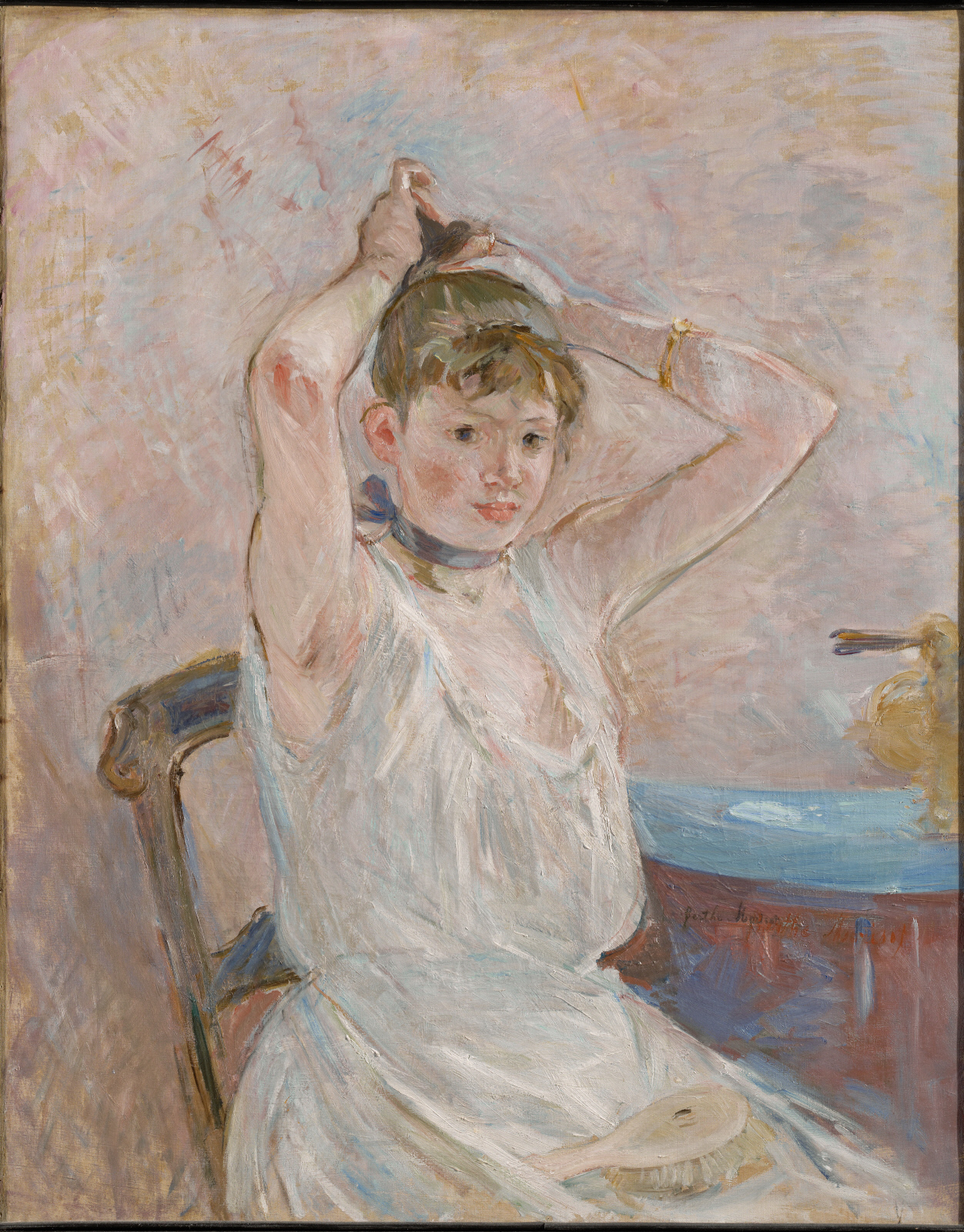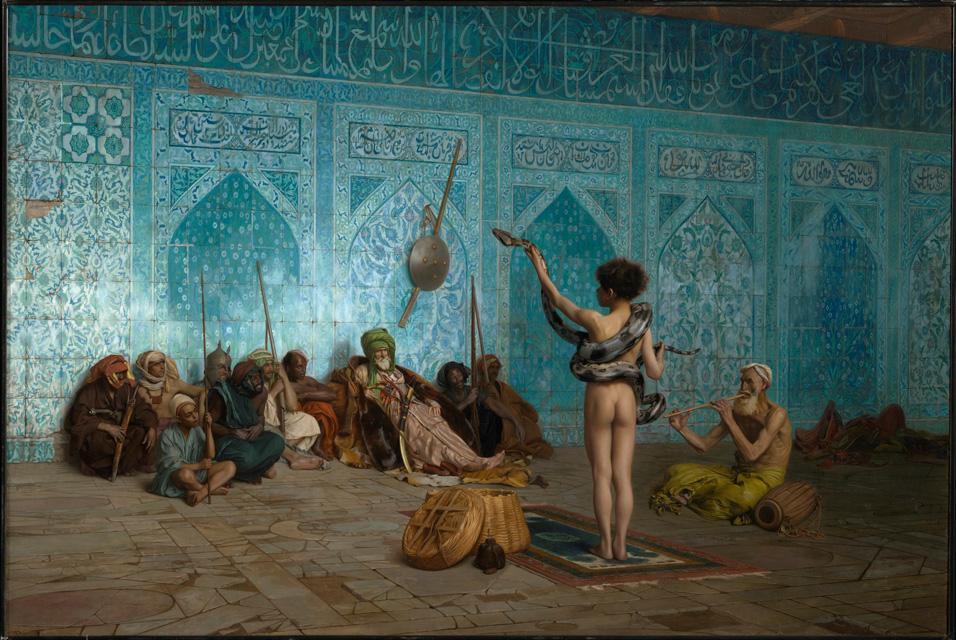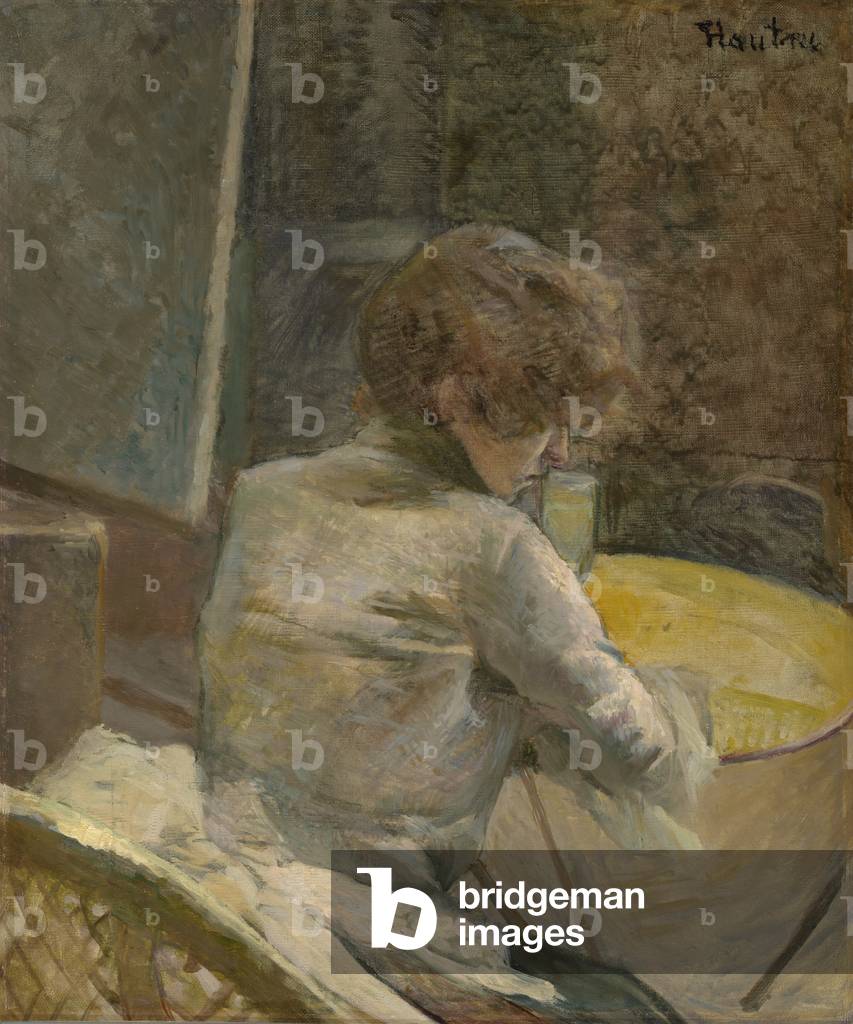On December 22, the Museum of Fine Arts, Houston (MFAH), will present The Age of Impressionism: Great French Paintings from the Sterling and Francine Clark Art Institute, showcasing the Clark’s renowned holdings of French Impressionist painting. The exhibition features 73 paintings by artists such as Édouard Manet, Edgar Degas, Claude Monet, Pierre-Auguste Renoir, Berthe Morisot, Camille Pissarro and Alfred Sisley, as well as Jean-Baptiste-Camille Corot, Jean-François Millet, Jean-Léon Gérôme, William-Adolphe Bouguereau, Henri de Toulouse-Lautrec and Pierre Bonnard, among others. The exhibition will be on view at the MFAH from December 22, 2013, through March 23, 2014.
The Clark launched its collection tour in early 2011 at the Palazzo Reale in Milan, coinciding with a three-year expansion of its Williamstown, Massachusetts facility. The MFAH is only the second U.S. museum to host the exhibition, with lead corporate funding provided by TMK IPSCO. The Kimbell Art Museum in Fort Worth, initially the exclusive American venue, displayed it in spring 2012. Houston was recently added as a final U.S. site following the conclusion of the Asian leg of the tour. To date, the tour has been viewed by more than 1.6 million people around the world.
Most of the works in the collection were acquired by Sterling and Francine Clark between 1910 and 1950. Sterling Clark, an heir to the Singer sewing machine fortune, began collecting art in Paris after a distinguished career in the United States Army. The couple assembled their collection based on their personal tastes, amassing paintings, silver, sculpture, porcelain, drawings and prints for their homes in Paris and New York. In 1950, the Clarks decided to create a permanent, public home for their collection. Drawn by the setting of the surrounding Berkshires and the appeal of its proximity to the academic community of Williams College, they settled on a 140-acre site in Williamstown, Massachusetts. The Sterling and Francine Clark Art Institute opened in 1955. Since its inception, the Institute has pursued a dual mission as both a museum and a center for research and higher education in the visual arts.
From a review well worth reading of an earlier showing: (Images added)
It is a jolt to discover that so many Renoirs can cast a pink pall (flecked with blue and turquoise) so intense that the early Pissarro of a snow-laden landscape, Piette's House at Montfoucault,(below) in a limited palette of grays, is visual relief. But it's one that doesn't last long. Just as quickly, the pink-hued light of Claude Monet's luxuriant seascape
The Cliffs at Étretat:
Claude Monet, The Cliffs at Etretat, 1885, oil on canvas, Sterling and Francine Clark Art Institute, Williamstown, Massachusetts. Sterling and Francine Clark Art Institute, Williamstown, Massachusetts
brings the viewer back to the rosy-hued world so popular among the impressionists and the Clarks.
But the exhibit is not all pastel prettiness. There are struggles and evolutionary gears grinding on the walls. The transition to impressionism and beyond was a time of great experimentation.
Barbizon school painter Théodore Rousseau worked on
Farm in the Landes
for more than 25 years, calling the experience "bittersweet." By the time he had finished his sun-flecked landscape of giant oaks, this style of meticulous observation had become passé. It is worth irritating the museum guards to get as close as possible to see the detail in this lovely work.
The oddly shaped Degas,
Dancers in the Classroom:,
Edgar Degas, Dancers in the Classroom, c.1880, oil on canvas, Sterling and Francine Clark Art Institute, Williamstown, Massachusetts; Sterling and Francine Clark Art Institute, Williamstown, Massachusetts
twice as long as it is tall, plays with panorama and perspective. It was never exhibited by Degas, and he kept it in his studio, working and reworking the figures. The outstretched leg of one ballerina was repositioned as many as nine times. While it was a constant problem for him, eventually it became one his most iconic works.
Two paintings by Henri de Toulouse-Lautrec in the Clark collection are revelations. They were painted after his academic training and before his avant-garde posterization of Parisian night life that became his most recognizable style. These two works, of the beautiful redhead
Carmen
and of a pensive woman sitting alone in a cafe,
Waiting,
are beautifully modulated paintings that easily could be mistaken for works by Degas.
From another review (images added):
The Age of Impressionism represents all the important types of painting that the Impressionists practiced, from landscapes to figure compositions and still lifes. Their near-‐magical mastery of effects of natural light comes through strongly in
Monet’s springtime view of Tulip Fields at Sassenheim, near Leiden or
Pissarro’s Piette’s House at Montfoucault, a winter scene:
Camille Pissarro, Piette's House at Montfoucault, 1874, oil on canvas, Sterling and Francine Clark Art Institute, Williamstown, Massachusetts. Sterling and Francine Clark Art Institute, Williamstown, Massachusetts
The Clark Renoirs are virtually an exhibition within the exhibition, representing the range of his subject matter and the evolution of his style from the 1870s to the 1890s. They include some of the most sensuous and seductive of all his works—such unabashed celebrations of youth and beauty as Girl with a Fan and Sleeping Girl. Among the other masterpieces of Impressionist figure painting in the exhibition is one of the most beautiful of Degas’s behind-‐the-‐scenes paintings of the ballet, Dancers in the Classroom, its off-‐centered composition reflecting the artist’s love of Japanese woodblock prints. Grouped near the beginning of the exhibition, paintings such as Gérôme’s Fellah Women Drawing Water give a sense of the high level of technical “finish” practiced by older painters and beloved of more conservative taste during the Impressionist era.
And another review of the earlier show:
It is a beautiful show, and the best part is that it just keeps on going. Paintings wrap around and fill the Kimbell’s large exhibition hall, and there is literally a masterpiece around every turn.
Pierre-Auguste Renoir, "Onions", 1881
Oil on canvas, 15 3/8 x 23 7/8 in. © Sterling and Francine Clark Art Institute, Williamstown, Mass.
“Onions” by Pierre-Auguste Renoir painted 1881 was one gem of the show. The deliberate and quick brushstrokes from the artist seem to rain down in parallel diagonals and almost collide with the curvature of the onions, garlic and cloth atop the table. As with most of the paintings in the exhibition, from afar a delicate and moving scene is rendered, but the closer the viewer gets, the more the canvas seems to disintegrate into swaths of color; it is no great mystery these artists and these very works were the inspiration for the pointillist movement that followed.
Another favorite piece by Renoir was “Sunset”, c. 1879.
Pierre-Auguste Renoir, "Sunset" c. 1879, oil on canvas, 18 x 24 © Sterling and Francine Clark Art Institute, Williamstown, Mass.
The oil on canvas measuring 18 by 24 inches pays homage to Claude Monet’s famous 1872 painting “Impression Sunrise”, the painting which lent the movement its name when Parisian art critic Louis Leroy mockingly referred to it with the phrase, ‘not a painting, just an impression’. Like Monet, Renoir’s seascape is a captured moment, an instantaneous impression depicted quickly on the canvas. With bright and dark blues, subtle yellows and vivid pinks the artist’s hand is evident in every stroke. As one looks at the piece, it is difficult to comprehend how the colors maintained their clarity and didn’t collide into a quagmire of brown or purple.
The piece is a masterful display of layered color and balancing line to create movement; the water moves at the mercy of the wind and current as the sun sets in the background, all targeted around a small black sail boat in the center of the canvas.
The numerous Renoir pieces are almost like a show within a show, clearly giving the viewer an overview of the artist’s evolution from the 1870s to the 1890s. Be sure to see his
“Self Portrait” from 1875
in which the artist portrays himself in a black suit with a fancy colorful collar; the portrait is intense in expression, depiction and emotion.
Great review, lots more images!
More images

Pierre-Auguste Renoir, A Box at the Theater (At the Concert), 1880, oil on canvas, Sterling and Francine Clark Art Institute, Williamstown, Massachusetts. Sterling and Francine Clark Art Institute, Williamstown, Massachusetts

Henri Fantin-Latour, Roses in a Bowl and Dish, 1885, oil on canvas, Sterling and Francine Clark Art Institute, Williamstown, Massachusetts. Sterling and Francine Clark Art Institute, Williamstown, Massachusetts

William-Adolphe Bouguereau, Seated Nude ,1884, oil on canvas, Sterling and Francine Clark Art Institute, Williamstown, Massachusetts. Sterling and Francine Clark Art Institute, Williamstown, Massachusetts

Pierre-Auguste Renoir (1841–1919). Venice, the Doge's Palace, 1881. Oil on canvas, 21 1/2 x 25 7/8 in. (54.5 x 65.7 cm). Acquired by Sterling and Francine Clark, 1933

Berthe Morisot (1841–1895), The Bath, 1885–86. Oil on canvas, 36 1/4 x 28 7/8 in. (92.1 x 73.3 cm). Acquired by Sterling and Francine Clark, 1949

Camille Pissarro (1830–1903), The River Oise near Pontoise, 1873. Oil on canvas, 18 1/8 x 21 7/8 in. (46 x 55.7 cm). Acquired by Sterling and Francine Clark, 1945

Paul Gauguin's 'Young Christian Girl,' 1894

Pierre Bonnard, Women with a Dog, 1891

Jean-Léon Gérôme, The Snake Charmer, c. 1879, oil on canvas. © Sterling and Francine Clark Art Institute, Williamstown, Mass.
The 73 paintings by 25 artists to be exhibited span 70 years and not only tell the story of the Clarks' devotion and passion for collecting but of painting in nineteenth-century France, from the Orientalist works of Gérôme to the Barbizon paintings of Corot and Rousseau to the Impressionist masterpieces of Manet, Degas, Monet, Renoir, Sisley and Pissarro, and concludes with the early modern output of Toulouse-Lautrec and Bonnard. Portraits, landscapes, marines, still lifes and scenes of everyday life are all represented.
Catalogue
A catalogue to accompany the exhibition is published by Skira Rizzoli, with editions in at least five languages. The 240-page publication features 131 color illustrations with essays by James A. Ganz and Richard R. Brettell.
Exhibition Schedule
• Museum of Fine Arts, Houston December 22, 2013 – March 23, 2014
• Shanghai Museum September 19 – December 1, 2013
• Hyogo Prefectural Museum of Art, Kobe June 8 – September 1, 2013
• Mitsubishi Ichigokan Museum, Tokyo February 9 – May 26, 2013
• Montreal Museum of Fine Arts October 8, 2012 – January 20, 2013
• Royal Academy of Arts, London July 7 – September 23, 2012
• Kimbell Art Museum, Fort Worth March 11 – June 17, 2012
• Fundación "La Caixa," Barcelona November 17, 2011 – February 12, 2012
• Musée des Impressionnismes, Giverny July 13 – October 31, 2011
• Palazzo Reale, Milan March 2 – June 19, 2011


,_Dancers_in_the_Classroom,_c._1880._Oil_on_canvas,_oil_39.4_x_88.4_cm._Sterling_and_Francine_Clark_Art_Institute.jpg)






